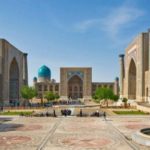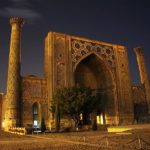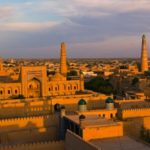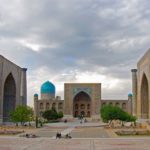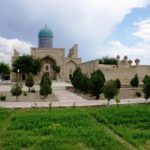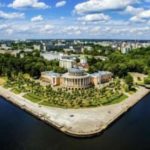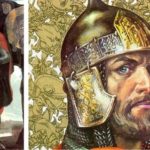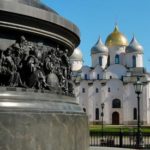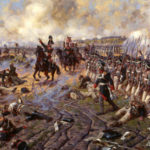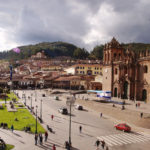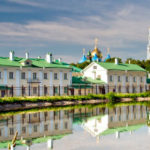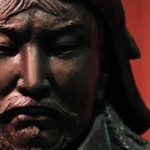Samarkand
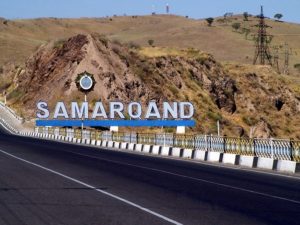 Samarkand is an ancient fairytale city with dramatic history and many amazing architectural monuments, located in southeast Uzbekistan. As early as the 6th century BC, the Samarkand region was called Sogd or Sogdiana, and the city itself was called Marakanda.
Samarkand is an ancient fairytale city with dramatic history and many amazing architectural monuments, located in southeast Uzbekistan. As early as the 6th century BC, the Samarkand region was called Sogd or Sogdiana, and the city itself was called Marakanda.
In this era, the Persian king of the Achaemenids Cyrus invaded Sogdiana and conquered Maracanda. But 200 years passed and Alexander the Great, defeating the Persian troops, conquered the city.
The biographer of Alexander the Great-Ariana enthusiastically described this fertile land with its magnificent gardens, clear rivers, lakes and high mountains. Despite the victory of the Greco – Macedonians, partisan wars began to erupt everywhere in Sogdiana, led by the brave Spitamen. For two years, Alexander suffered losses in the army and could not capture the elusive Spitamen. And only after the local nobility was bribed, Spitamen was treacherously killed, and his head was solemnly presented to Alexander. The rebellion of the Sogdians was brutally suppressed, and the city itself was destroyed at the behest of Alexander. After many years, Marakanda rose from the ruins, but in 306 it was conquered by the Seleucids and annexed to the Greco-Bactrian kingdom, and in the first century it entered the Kushan kingdom.
Sogdiana has always been the object of attention of foreign conquerors, since it was at the crossroads of the Great Silk Road, because the largest caravans from China, India, Turkey, Persia, Syria, etc.
Since the 5th century, these lands have been conquered by the Ephtalites, nomadic Turkic tribes who came from Altai, and in 712 Sogd was conquered by the Arabs, who, after a month siege, destroyed the city. When planting a new religion, the Arabs destroyed historical values, writing, and culture. In 713, an uprising began in Samarkand. Sogdians along with the Turks dealt a crushing blow to the Arabs and drove them out of the city, but in 809 Samarkand was again enslaved by the Arabs. Given the experience of past years, the Arabs gave the right to rule the city of the local nobility, paying tribute and taxes. This small freedom gave an impetus to the economic growth of Samarkand. Agriculture, trade, construction and irrigation, as well as handicraft and culture began to develop. The townspeople themselves began to produce paper, cotton fabrics, glass, ceramics, the necessary utensils for the household.
The heyday and revival of Samarkand took place against the backdrop of a change in the ruling dynasties of Tahirids, Samanids, Karakhanids, Ghaznavids, Seljuks, Kara-Chinese and Khorezmshahs.
The most tragic and destructive was the invasion of the Mongol troops led by the Great Genghis Khan. After which Samarkand will be under the Mongol yoke for a century and a half.
The unprecedented flowering of Samarkand falls on the reign of the Great Temur, who, having defeated the troops of Genghisides, created his own vast empire. Samarkand became the capital of the Temurids empire stretching from the Mediterranean Sea to Kashmir, and from the Aral Sea to the Persian Gulf.
Masters and artisans from different countries are brought to Samarkand. Together with local masters, they build magnificent architectural monuments of Gur-emir, Bibi-khanum, the mausoleums of Shahi-zinda, the complex of Registan palaces, etc., which to this day amaze with their beauty and grandeur.
An invaluable contribution to the development of science and culture of Samarkand was made by the ruler and scientist Mirzo Ulugbek, the grandson of Temur. At the age of 15, beginning his reign in Samarkand, he paid great attention to science, encouraged scientists, called for knowledge and made education accessible to all segments of the population. Ulugbek created a university in Samarkand, as well as an unparalleled observatory, where observations were made of the stars and accurate calculations of their trajectories. For 40 years of rule Ulugbek turned Samarkand into one of the centers of science and enlightenment of the East. However, his life tragically ends, he was killed on the orders of his son Abdulatif. In less than half a year, even the father’s own will be executed, and his head will be hanged at the entrance to the Ulugbek madrasah. It was the retribution of the students of Ulugbek for their teacher.
After Ulugbek, Samurkand was ruled by Babur, Sheybani Khan, the Mangyts, but with them the city continued to develop and flourish.
Today, Samarkand is an interesting historical city, where they could preserve the ancient monuments and the ancient culture of their ancestors. There are always many tourists from different countries. This is the same mysterious city on the Silk Road with lively bazaars and hospitable Samarkand residents.
